Ever wondered what’s inside the Kaabah in Mecca? Jom tengok!
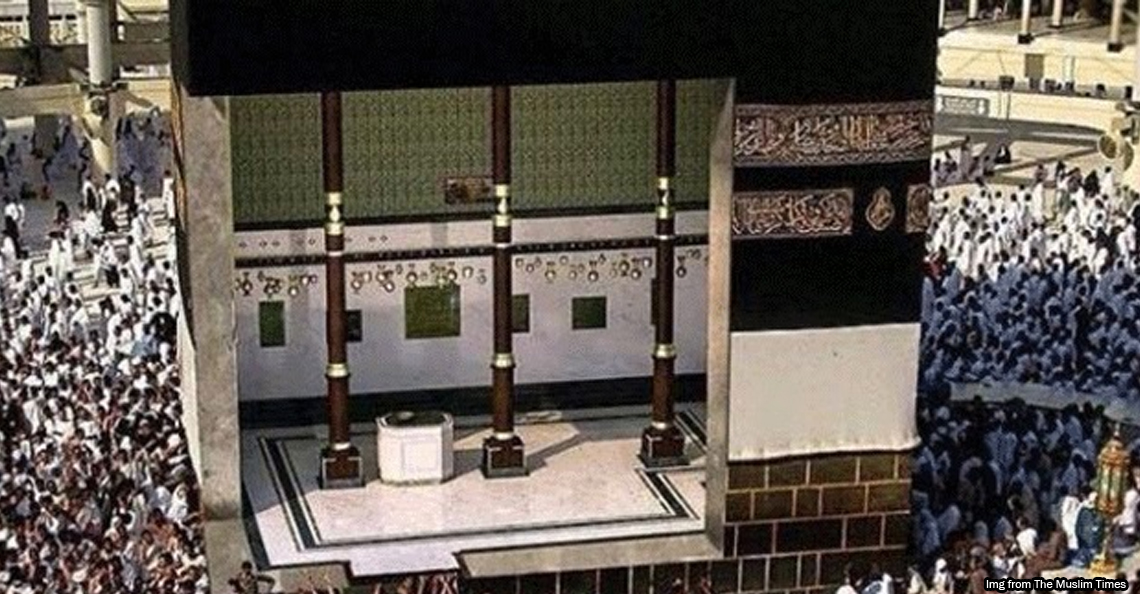
- 666Shares
- Facebook630
- Twitter5
- LinkedIn3
- Email3
- WhatsApp25
Even if you’re not Muslim, if you live in Malaysia, you might have seen pictures of the Kaabah on prayer mats, on mamak shop decor, or even on huge tapestries like this:

We dunno if people still use this to decorate nowadays… Img from Cikimm.
For those of you not familiar with the structure, the Kaabah (or Kaaba) is a huge stone construction located at the center of the Masjid al-Haram in Mecca. It’s a pretty significant landmark in Islam: Muslims around the world face the Kaabah’s direction when they sembahyang, and it plays a big part in haj, which is a pilgrimage that Muslims should do if they’re able. To complete the haj, one of the requirements is to walk around the Kaabah seven times.
While a lot of people are familiar with what the Kaabah looks like on the outside, not many are familiar with what’s inside: the structure is normally not open to the public, even to people performing the haj. Recently, Muhyiddin became the first head of government allowed inside after the place was closed for almost a year due to Covid-19, and it’s a privilege that made him feel all ‘choked up‘.
“What made me more choked up and grateful was, when with His (God) permission as well, the Saudi Arabian King who is also the Guardian of the Two Holy Mosques allowed for me to enter the Kaabah,” – Muhyiddin Yassin, translated from Berita Harian.
Wah. So what did he see inside? While we can’t tell you what Muhyiddin personally saw, people have documented what’s inside before, and…
It’s essentially a huge room, with pillars and calligraphy
As the ‘most sacred building in Islam‘, it’s quite formidable up close. Measuring roughly 10.5 by 12 meters at the base and about 15 meters high, the cuboid is kept covered with a gold-embroidered black cloth (called the kiswah) which is changed once a year. The entrance to the building is a 3-meter-high locked door made with solid gold (contains 280 kgs of 99.9 gold), set near the eastern corner and raised above ground level. To reach the door’s level, a portable wooden staircase is needed.
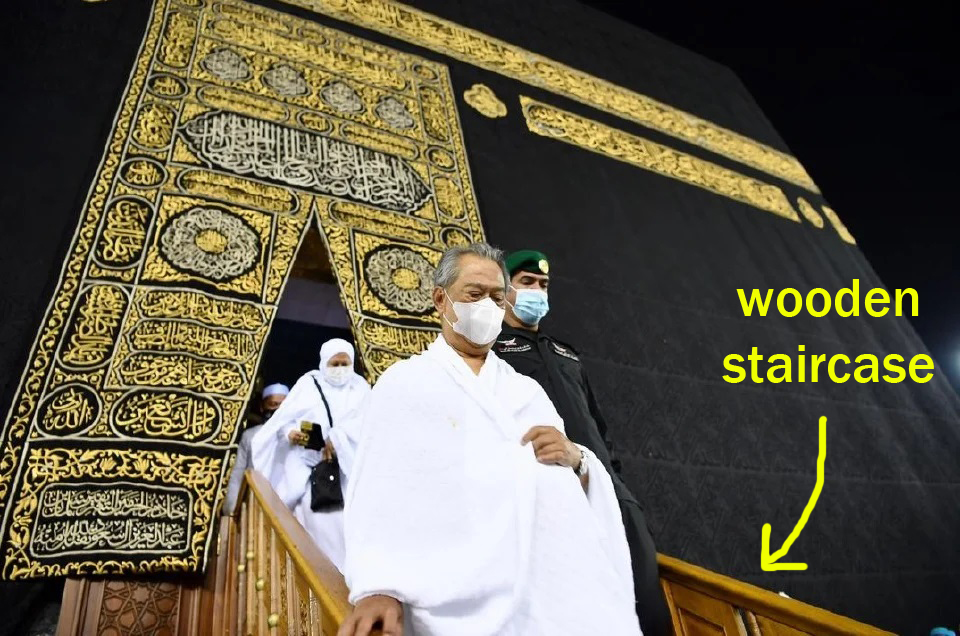
Muhyiddin and wife going down the mobile staircase. Img from Astro Awani.
Once you get past the golden doors, you’ll enter what’s essentially a large room, with a much smaller room in one corner housing a staircase going up to the roof. The floor and bottom half of the walls are covered with marble, and the upper half of the walls and the ceiling are draped with an embroidered curtain of green velvet. Three pillars of solid wood, arranged in a straight line, support the construction.
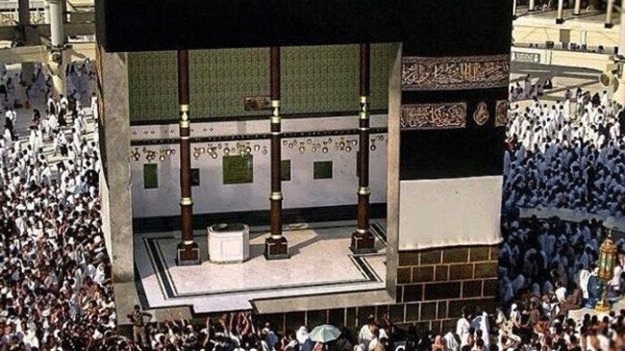
Cross section of the monument. Img from TheMuslimTimes.
Running through all three pillars is a single thin beam from which hang numerous old, lamp-like objects, referred to by some as the Kaabah’s gifts. These could be gifts given by notable visitors from long ago, and they may contain incense or perfume.
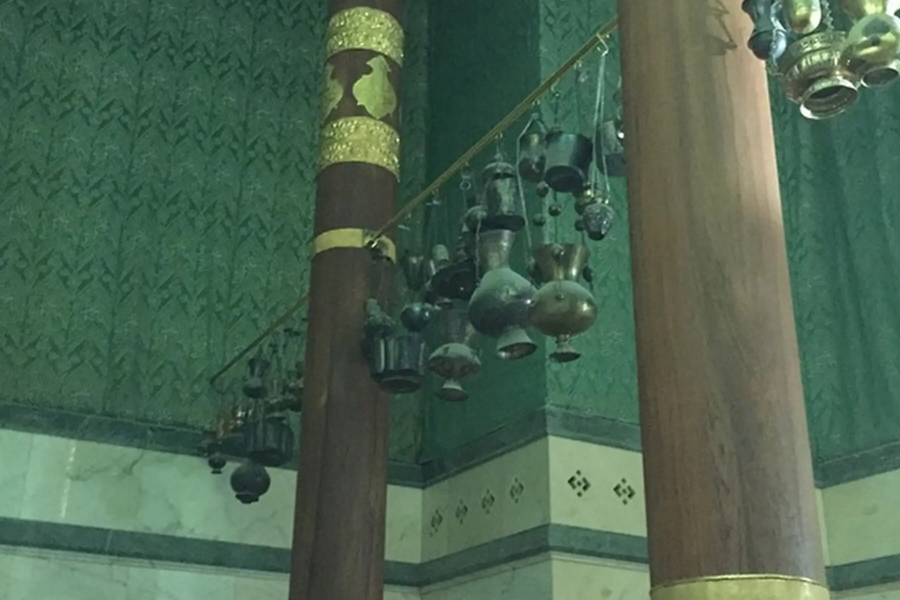
Close up of the beam, and part of the curtained walls. Img from al-Arabiya.
Besides those, a total of ten stone documents decorate the inner walls. Nine of them are slabs of marble with Arabic calligraphy, with the inlaid words being made of precious, colorful marble. These date back to 600 AH (between 1203/1204). The remaining piece is a document that detailed the date of renovations made to the Kaabah by the late King Fahd Abdulaziz al-Saud. Finally, the tiny, podium-like slab between two of the pillars is a cupboard, where they store the perfumes used to cleanse the interior.
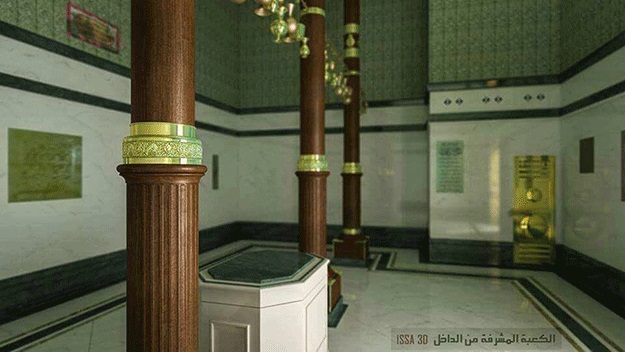
The golden door in the background leads to the roof. Img from TheMuslimTimes.
It’s possible to pray inside the Kaaba, since a portion of the floor near one wall is marked with a different-colored marble. This spot is said to be where Prophet Muhammad once prayed, and where the Saudi King or visiting country leaders would pray when they visit.
And that pretty much covers it. If it feels a bit bare, bear in mind that Muslims do not actually worship the Kaabah itself: it just serves as a sort of reference point for Muslims to face when praying, giving a sense of unity. So there’s really no need for anything too fancy inside. Still, you might be wondering…
Can I visit and enter the Kaabah?
As far as we can check, the past four Prime Ministers have all managed to enter the Kaabah: Dr Mahathir and Pak Lah did it in 2002 and 2004, respectively, and Najib did so in 2018.

Najib Razak exiting the Kaabah in 2018. Img from daengselili.
But can you enter if you’re not at Prime Minister level? If you’re a non-Muslim, probably not: non-Muslims are still not allowed into several places in Saudi Arabia, including Mecca where the Kaabah is located. If you’re a Muslim, however, there might be jalan. While it is said that only those with special privileges may enter, based on online discussions, you might be able to if you’re lucky enough.
The interior of the Kaabah are washed once a year, in the middle of the month of Muharram, which is the Islamic month after which Muslims perform the haj. If you happen to be around for the two hours or so during which the cleaning process takes place, the keeper of the Kaabah’s key may randomly select you and several other people for a short tour inside. But that’s what people said online lah. We dunno if true or not.
If you don’t think you’re lucky enough for that but still want to pray inside the Kaabah, there’s still a way you can technically do that. See that little semicircle?
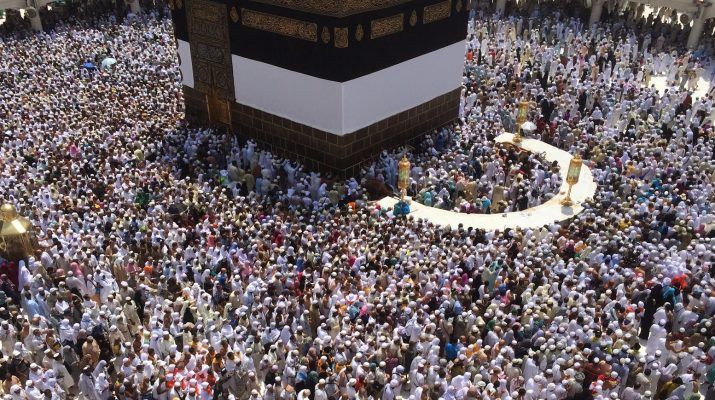
That’s called the Hijir Ismail, aka Hateem. Img from Pinterest.
According to lore, the Kaabah used to be a lot bigger, but after a flood destroyed it, they didn’t have enough resources to rebuild it in the original size. That semicircle marked the original boundary of the Kaabah. Praying inside that semicircle is recognized as equivalent to praying inside the Kaabah, but only for non-obligatory prayers (prayers other than the daily five compulsory ones). Maybe not as impressive as actually getting inside and seeing the decor, but it’s a lot more doable.
Even more doable? This 360 video showing the Kaabah’s interior. Don’t even need to leave your seat.
- 666Shares
- Facebook630
- Twitter5
- LinkedIn3
- Email3
- WhatsApp25
